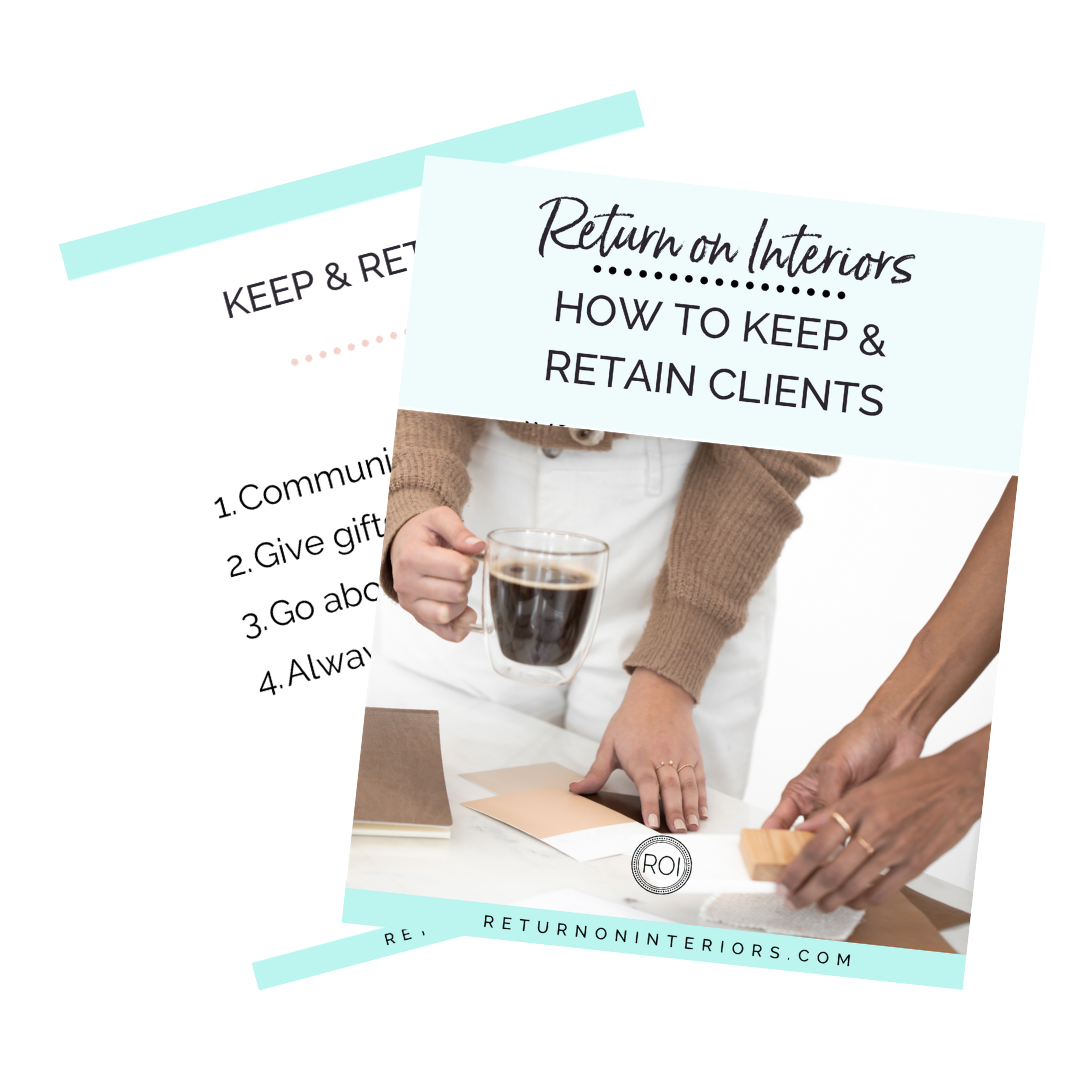
How to Set Up and Fill a Client Pipeline
Keeping your head down and completely focusing on a project can keep the work rolling smoothly. But one day you'll raise your head and realize you don't have any other projects coming your way. YIKES! That is definitely not a good scenario - so how do you keep that from happening to you and your business?? With a client pipeline! That document allows you to project your work into the future and to avoid that sudden loss in work. Here's how to set one up, and keep it filled!
Creating the Pipeline
My client pipeline is in Excel, but you can use any document creator that you want. The key is that it should have 12 months listed across the top and then projects listed down a column on the left. Don't worry about naming future projects - you can literally title them Project A, Project B, and so on. Include projects for all of your services - Design for a Day, a large full-service project, a medium full-service project, consultations, whatever you offer! At the top of that column, put your current projects and when payments may come through. So if your Robinson project still owes you a payment of $10,000 in May, put that amount under the May heading.

Filling It In
I'm sure you've projected your goal for revenue in 2021, right?? If not, this is the time to do it! Once you have your goal set, and the revenue that you KNOW you'll have this year, you can start filling in what you would need to reach that goal. So if you set a goal of $1 million this year, and you currently have projects that will bring in $500,000, you know that you need to project another $500,000 in biz to hit your target. That could include a full-service client who will bring in $400,000 and a refresh project with a former client for $100,000. Or 3 small projects that bring in $300,000, 10 Design in a Day consultations that will bring in $50,000, and a medium-sized project that will have revenues of $150,000. Put those future projects in and fill in where the money should come in to help you meet your overhead.
Add Your Overhead
Speaking of which, I like to have a line across the very top that shows my overhead for each month. Don't know what your monthly overhead is? Add up all of your fixed costs - rent, payroll, insurance, office supplies, gas, travel, etc. - for the year and then divide it by 12. That's your monthly overhead, and you should ALWAYS keep that number in mind. It's the very least you need to make each month. You want to be sure you have money coming in at the right times during the year to be able to meet that overhead without having to worry.
Review and Hit Your Marketing
So now you know how much you need to make this year just to break even, AND you know what your "reach" goal is. Once you've filled out your pipeline document, you also have a good idea of what type of projects you need to hit your goal. Now you know where and how you need to focus your marketing. Keep up a strong marketing strategy and outreach to ensure that pipeline doesn't run dry! And be sure to set a time each month to review your document and adjust. For example, you may get a larger full-service project than you were expecting, so you might take out a consultation or two. But whatever you do, don't let up on your marketing! It can take 4-6 months to get a client once you've started your marketing, so make it an ongoing process.
I love having a client pipeline that's a living document! It lets me keep my eye on the future while working on current projects. AND it keeps my business from being a scary rollercoaster ride! To help you with that client pipeline, download my FREE Guide for How to Keep and Retain Clients!


 Get almost 50
Get almost 50



